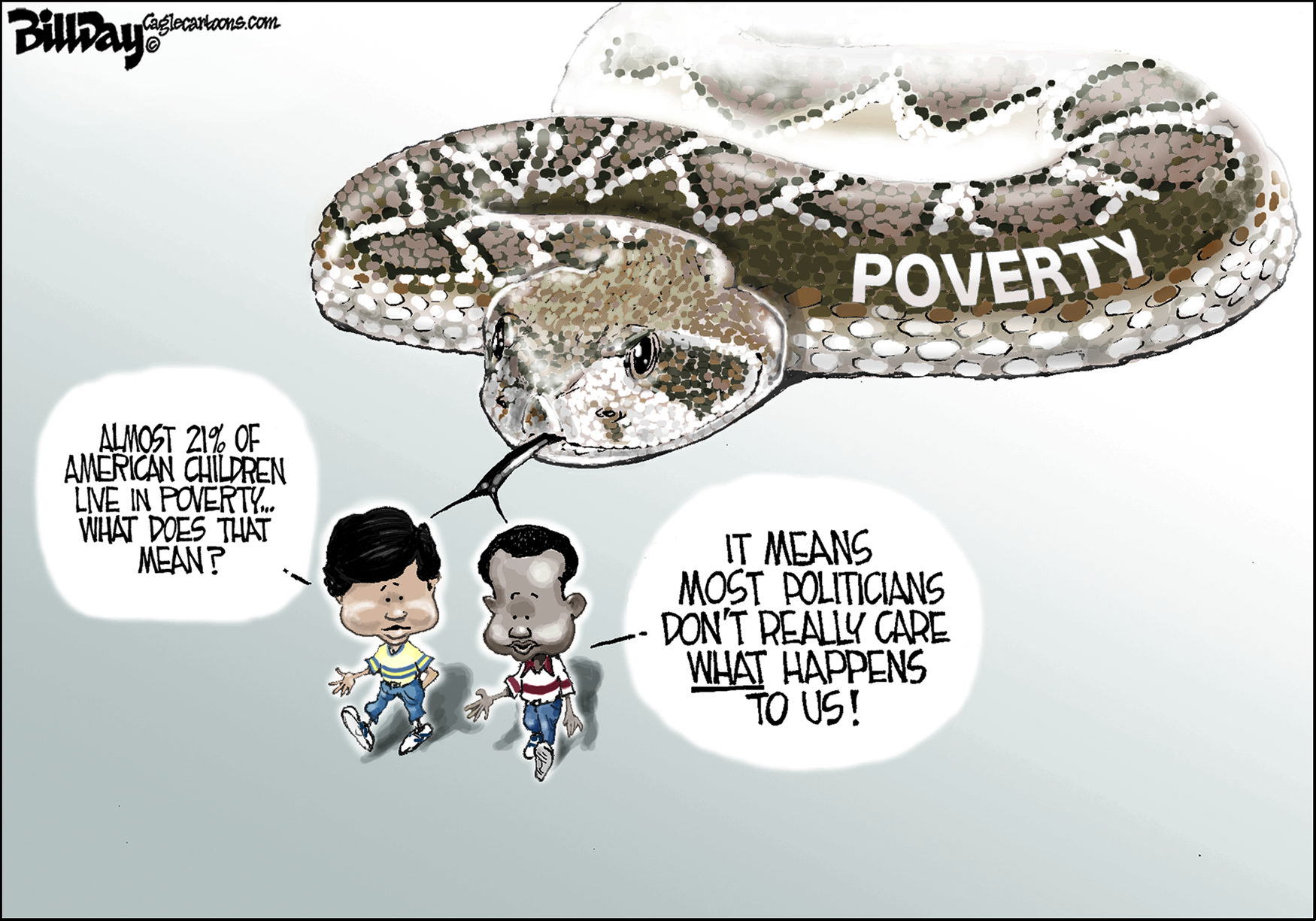BY MIKE W. RAY
 When it comes to ensuring that children in this state are safe, healthy and protected, Oklahoma is just OK. Not much to brag about.
When it comes to ensuring that children in this state are safe, healthy and protected, Oklahoma is just OK. Not much to brag about.
Oklahoma falls below the national average in several areas of child well-being, placing the state at 36th in the nation, according to the 2017 Kids Count Data Book released by the Annie E. Casey Foundation.
The annual Kids Count Data Book uses 16 indicators to rank each state across four domains – health, education, economic well-being, and family and community – that reflect what children need most to thrive.
“A ranking of 36th place out of 50 is not good enough for our children and not good enough for Oklahoma,” said Joe Dorman, chief executive officer of the Oklahoma Institute for Child Advocacy. “Our mediocre outcomes reflect mediocre investments made in the services that children rely on, like public education and health. We have to do more to lift our children up and lay the groundwork for the next generation to be successful.”
Oklahoma ranks:
– 28th in economic well-being. The economic well-being domain examines data related to child poverty, family employment, housing costs and whether older teens not in school are working. In Oklahoma, 22% of children – more than one in five – are growing up below the poverty line.
– 29th in health. The health domain looks at the percentage of children who lack insurance, child and teen death rates, low-birth weight babies and alcohol or drug abuse among teens. Oklahoma moved up five spots in health to 29th place, due in part to increased access to health insurance. Seven percent of Oklahoma’s kids now lack coverage, a 30% decrease between 2010 and 2015.
– 39th in education. This domain examines the percentage of children ages three and four not attending school, fourth graders not proficient in reading, eighth graders not proficient in math and high school students not graduating on time. Fifty-seven percent of Oklahoma’s three- and four-year-olds are not attending school, higher than the national average. A disappointing 77% of eighth graders lack proficiency in math.
– 39th in family and community. This domain examines the percentage of children living in high-poverty areas, single-parent households and education levels among heads of households, as well as teen births. The teen birth rate in Oklahoma remains far higher than the national average at 35 births per 1,000 females, compared to 22 nationally. Twelve percent of children are living in high-poverty neighborhoods.
Despite the rankings, Dorman said, the state has made progress in pursuing reforms that should eventually have an impact, such as a push to address child nutrition. OICA worked closely with legislators to pass a bill strengthening child nutrition by supporting greater partnerships between food banks and public schools.
“While we still have a ways to go, I am proud of the progress that Oklahoma has made for our state’s children through data-driven investments and policies,” said Dorman. “Maintaining health care programs, investing in early childhood education and expanding programs to create economic stability for families will help ensure all children in the state have the opportunity to thrive.”
“We have a long way to go,” said former state Rep. Laura Boyd, the national public policy director of the Family Focused Treatment Association. “It is not OK when any child is homeless, hungry, lacks clothing, and is growing up in an institution or congregate care.
“Oklahoma’s elected officials cannot assume this is solvable by churches or any community-based agency without their direct support through necessary appropriations to the Department of Human Services and for Medicaid,” Boyd, a Norman resident, continued. “Statistics suggest that 28% of youth nationally have a mental disorder, and 69%-80% who are in foster care need mental health services.
“Now that we are ‘improving’ in areas such as lower teen pregnancy rates and a decline in teen abuse of alcohol and/or drugs, we must tackle the hard problems of family poverty and lack of hope.”
OICA research indicates that in Oklahoma:
– More than 200,000 children are impoverished, and more than 110,000 live in high-poverty areas.
– Research indicates 23.5% of the children in Oklahoma County, and 22.6% of the children in Tulsa County, live in poverty. In McCurtain County, the child poverty rate is 32.3%.
– Oklahoma has one of the highest rates of “food insecurity” in the nation; more than one-in-four children face hunger daily.
– In the 2015-16 school year, 62% of Oklahoma’s public school students qualified for free or reduced-price meals.
– Some 71,000 children have no health insurance.
– Approximately 279,000 children have parents who lack secure employment.
– About 17,000 teen-agers are not enrolled in school and not working at a job.
– Almost 4,400 teens gave birth last year.
– Approximately 61,000 young children are not in school, for various reasons.
– The state Department of Education documented more than 27,000 homeless students during the 2014-15 school year. It is estimated that four of every five of those youngsters were “doubled-up,” meaning they were “couch-surfing,” often unaccompanied, living with relatives or friends on a temporary basis. In addition, 5.4% of them were unsheltered and living in cars, parks, abandoned buildings, substandard or inadequate housing, and 3.4% were living in hotels/motels.
– Two-thirds of Oklahoma fourth-graders are not proficient in reading, and three-fourths of Oklahoma eighth-graders are not proficient in math.
– More than 315,000 children live in a home where just one parent resides.
– Some 96,000 children have, or have had, at least one parent incarcerated. For years Oklahoma has logged the highest, or nearly the highest, incarceration rates in the nation.
– Six percent of Oklahoma’s children are being reared by their grandparents.
– In Fiscal Year 2016, the DHS received 80,573 reports of alleged child abuse, neglect, or both, and subsequently 15,187 children were confirmed to be victims.
– Almost 10,000 Oklahoma children were in foster care at the end of Fiscal Year 2016, records indicate. On a positive note, though, 5,599 children left state custody this year and were successfully reunited with their biological families, adopted, or placed in a guardianship situation, the DHS reported. This is the highest number of exits from state care in one year since FY 2009, according to the agency’s Child Welfare Services.
NOTES
The 2017 Kids Count Data Book is available at www.aecf.org. Additional information can be found at www.aecf.org/databook, which also contains the most recent national, state and local data on hundreds of indicators of child well-being. Journalists interested in creating maps, graphs and rankings in stories about the Data Book can use the Kids Count Data Center at datacenter.kidscount.org.
The Oklahoma Institute for Child Advocacy [OICA] is an Oklahoma partner of the Annie E. Casey Foundation. OICA released a 2017 Children’s Agenda.
The Annie E. Casey Foundation creates a brighter future for the nation’s children by developing solutions to strengthen families, building paths to economic opportunity and transforming struggling communities into safer and healthier places to live, work and grow. For more information, visit
www.aecf.org. Kids Count is a registered trademark of the Annie E. Casey Foundation.
– Mike W. Ray, a veteran Oklahoma journalist, lives in Oklahoma City. He recently retired after four years as media director for state House Democrats.








